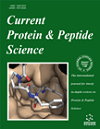
Full text loading...
We use cookies to track usage and preferences.I Understand
TLR4 stands at the forefront of innate immune responses, recognizing various pathogen-associated molecular patterns and endogenous ligands, thus serving as a pivotal mediator in the immune system's defense against infections and tissue damage. Beyond its canonical role in infection, emerging evidence highlights TLR4's involvement in numerous non-infectious human diseases, ranging from metabolic disorders to neurodegenerative conditions and cancer. Targeting TLR4 signaling pathways presents a promising therapeutic approach with broad applicability across these diverse pathological states. In metabolic disorders such as obesity and diabetes, dysregulated TLR4 activation contributes to chronic low-grade inflammation and insulin resistance, driving disease progression. In cardiovascular diseases, TLR4 signaling promotes vascular inflammation and atherogenesis, implicating its potential as a therapeutic target to mitigate cardiovascular risk. Neurodegenerative disorders, including Alzheimer's and Parkinson's diseases, exhibit aberrant TLR4 activation linked to neuroinflammation and neuronal damage, suggesting TLR4 modulation as a strategy to attenuate neurodegeneration.
Additionally, in cancer, TLR4 signaling within the tumor microenvironment promotes tumor progression, metastasis, and immune evasion, underscoring its relevance as a target for anticancer therapy. Advances in understanding TLR4 signaling cascades and their contributions to disease pathogenesis have spurred the development of various pharmacological agents targeting TLR4. These agents range from small molecule inhibitors to monoclonal antibodies, with some undergoing preclinical and clinical evaluations. Furthermore, strategies involving TLR4 modulation through dietary interventions and microbiota manipulation offer additional avenues for therapeutic exploration. Hence, targeting TLR4 holds significant promise as a therapeutic strategy across a spectrum of human diseases, offering the potential to modulate inflammation, restore immune homeostasis, and impede disease progression.

Article metrics loading...

Full text loading...
References


Data & Media loading...

